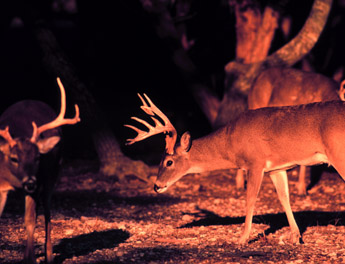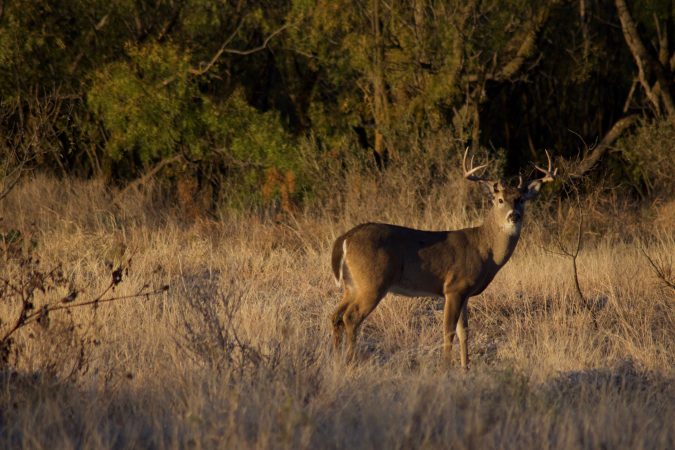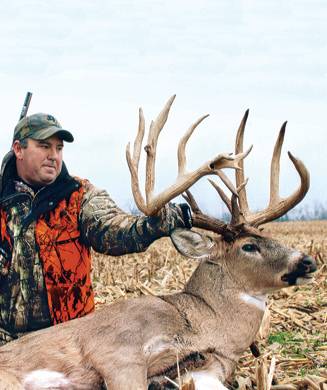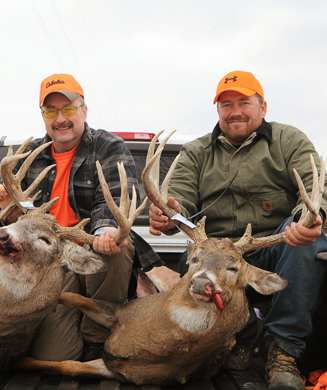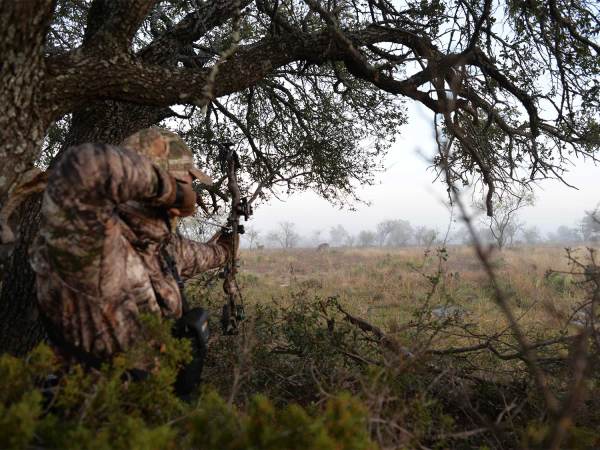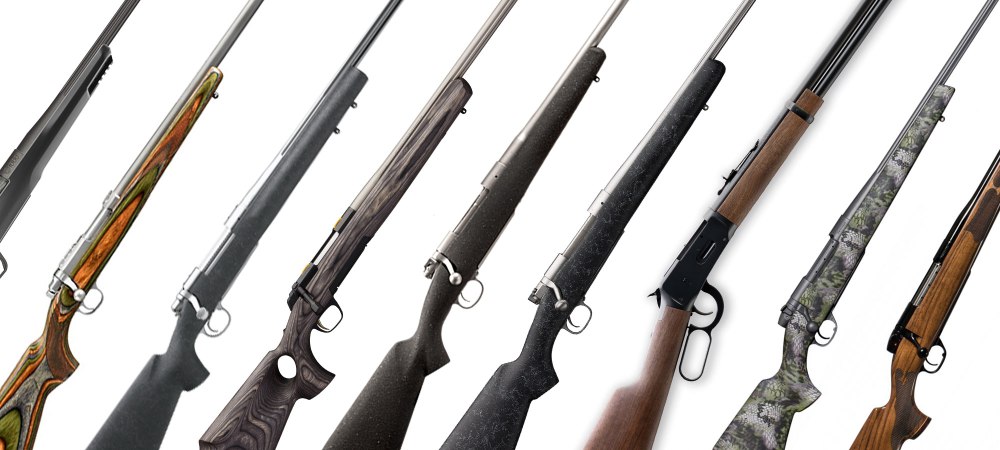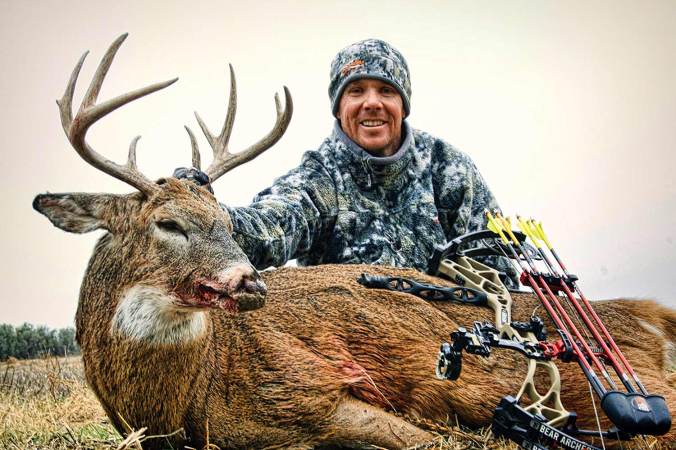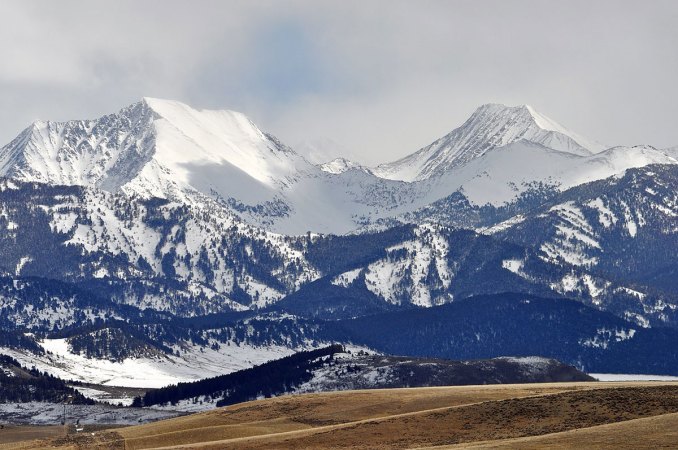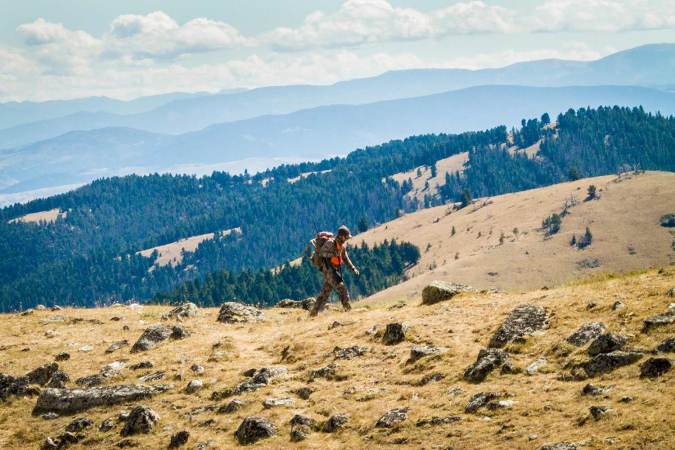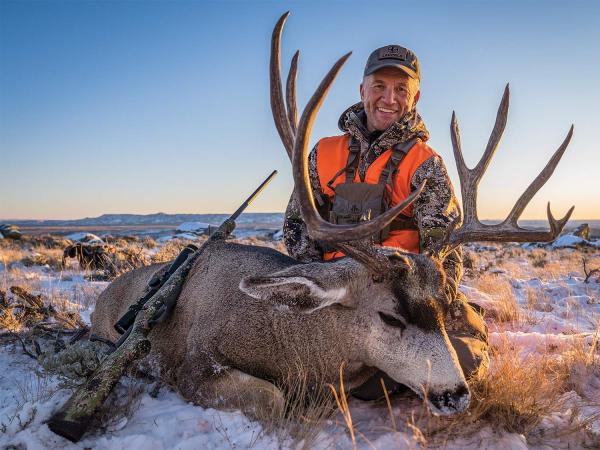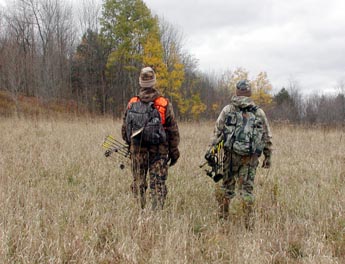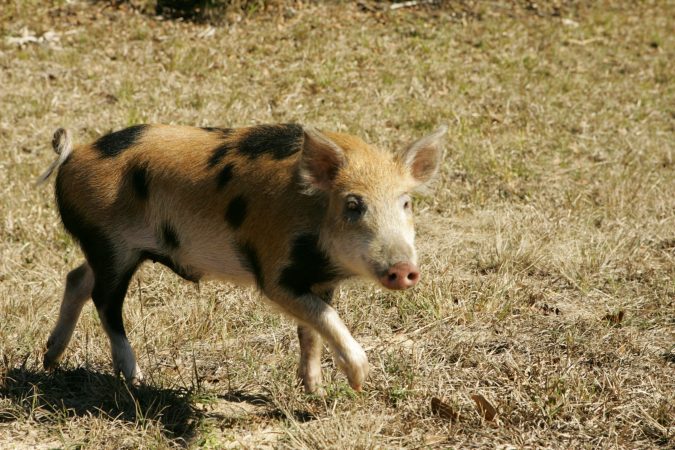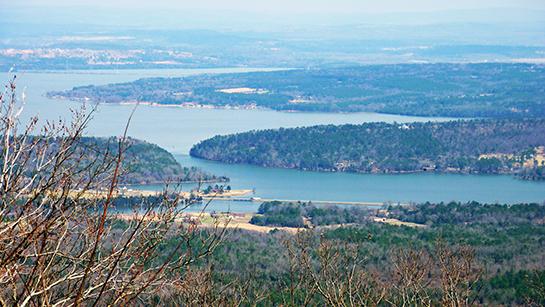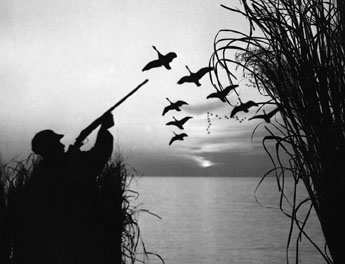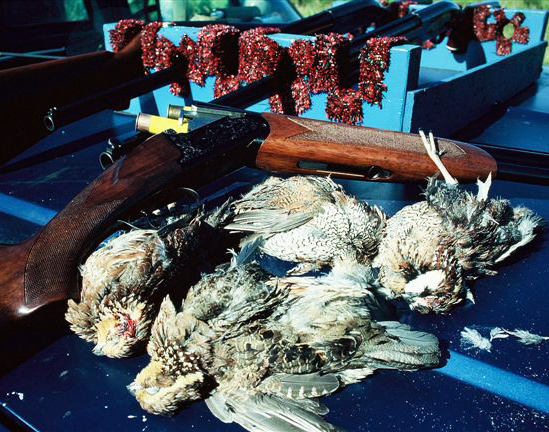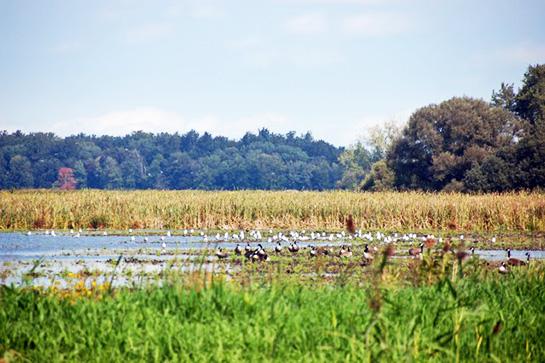Mention public hunting to many modern whitetail chasers and their noses curl, their brows knit, and they quickly change the subject to how much they’re paying per acre for their choice private deer leases.
For millions of American sportsmen, however, hunting public land is the only option. And in many regions across the nation, it’s not a bad deal–not by a long shot. In fact, for those who are willing to do a little research and learn how to negotiate the frequently bewildering bureaucratic pathways to obtaining licenses and permits, public whitetail hunting can be superb. The proof is the numerous reports of big bucks tagged on public land every fall, including some of record-class proportions. The chances of tagging a trophy buck on public land are only going to get better as more states switch to quality deer management practices and institute more stringent antler restrictions.
Here, then, is a list of top whitetail public-hunting states scattered around the nation and contact information that will help you get started in your quest for a public-land trophy. Some of the lands in these states are in remote wilderness areas; others can be found near big cities. Regardless of their location, all offer access to some remarkably good whitetail hunting.
ARKANSAS
Arkansas is reducing deer harvest because state biologists have concluded that recent liberal doe seasons resulted in an overkill in the mountain region of the north. But the state still boasts plenty of whitetails and good hunting. About 650,000 gun hunters down 100,000 animals a year from a herd of around 800,000 animals.
The southern region has the most whitetails, with both the White River National Wildlife Refuge (NWR) and Trusten Holder Wildlife Management Area (WMA) being popular public spots. The state leases the land that makes up the Casey Jones WMA, near the town of Monticello, from the Georgia-Pacific timber company; for a $10 permit, hunters can comb the WMA’s 83,000 acres. It’s wide open to public hunting through the state seasons. State deer coordinator Cory Gray says its whitetail density is 30 to 35 animals per square mile, and the odds of tagging a deer are good.
The western Ozarks is the place for better bucks, especially in the Ozark National Forest, Buffalo National River, and the Gene Rush, Hobbs and Madison County WMAs.
GEORGIA
With nearly 100 WMAs and prime federal deer-hunting land such as Fort Stewart and Piedmont National Wildlife Refuge, the Peach State is a deer hunter’s dream spot.
Georgia still produces bucks of Boone and Crockett Club quality, but not as many as it did during the heyday of soybean field production a few years ago. Still, plenty of 130- to 150-inch whitetails are tagged each fall, and a few of them are taken on public land. The Piedmont and Upper Coastal Plain areas have the largest deer herds, but lots of whitetails (1.2 million) populate the state. About 275,000 firearms hunters shoot 400,000 animals each season.
Among the WMAs known for producing big bucks each season are B.F. Grant, River Bend, Flint River, Joe Kurz, Di-Lane, Berry College, Lake Russell, Ogeechee, Ossabaw Island and Rum Creek.
IDAHO Montana (with limited nonresident licenses) gets more press, but Idaho offers over-the-counter whitetail tags and superb public hunting. Prime areas are agricultural lands along the Idaho-Washington border north of the Salmon River and the many national forests from the Salmon River north to Canada. Mature bucks are found throughout the region, and in recent years trophy bucks have been harvested in all areas north of the Salmon River. The Clearwater and Kaniksu national forests are recommended.
KENTUCKY
The hunting spotlight has shone on the Bluegrass State for the past decade or so, and no wonder: Since 1987 Kentucky has produced over 150 B&C bucks from more than 60 counties, making it one of the best states in the nation for giant whitetails. The state averages about 10 B&C bucks a year. Last season 170,000 hunters tagged 116,500 Kentucky whitetails from a herd of 800,000. The tally includes 16,400 deer taken with muzzleloaders. There’s plenty of excellent hunting available on Kentucky public land. For example, 8,000-acre Ballard WMA, a short drive west of the Ohio-River community of Paducah, is prime. Ballard requires hunters to pay a fee and apply in advance for access. It isn’t overrun with deer (20 per square mile), but it has a one-to-one buck-doe ratio, and there are plenty of 140-inch bucks, according to Kentucky big-game coordinator Jonathan Day.
Upriver, public lands in Union and Henderson Counties annually produce some of the biggest bucks taken in the state. Peabody WMA and Fort Campbell, a bit east of Ballard but still in the western part of the state, are also top public spots. Each WMA has yielded B&C bucks.
LOUISIANA
The Pelican State touts itself as “the sportsman’s paradise,” and deer hunters certainly have reason to agree. Each year, 200,000 firearms hunters harvest nearly 250,000 whitetails from a herd of 1 million deer.
Abundant mast crops the last few years have made for large, healthy whitetails throughout much of the state. Statewide, cool weather is the biggest regulator of deer-hunting success in Louisiana. If temperatures drop and autumn rains fall, deer generally stay on the move more during shooting hours. Top public hunting areas administered by the federal government include the Tensas River NWR and Lake Ophelia NWR. Other good options include Jackson Bienville, Red River, Three Rivers, Sherburne and Union WMAs. Also, consider these facts: Two years ago a 19841/48 non-typical was harvested on Camp Beauregard WMA, and a typical buck scoring 14011/48 was taken by a bowhunter on Fort Polk WMA.
MAINE
Maine possesses a special mystique among deer hunters in the Northeast. It’s heavily timbered north-woods country where big-bodied bucks roam. Although 97 percent of the state is privately owned, much of the wild and woolly northern tier belongs to large timber companies that open their lands to hunters. According to state deer biologist Gerry Lavigne, a good winter carryover of whitetails from last year should translate into an increased harvest this fall.
Whitetails are not as abundant in northern Maine as they are in the southern, mostly private part of the state. But wilderness bucks in the north grow old from light hunting pressure, and there are some bruisers available. As a bonus, hunters may also tag a black bear while hunting whitetails. Clear-cuts are choice hunting locations for deer and bears in big woods regions. The North Maine Woods Association (207-435-6213) keeps tabs on public hunting lands, which are generally found north of Greenville and Millinocket and west of Ashland and Fort Kent.
MARYLAND
Though small in size, Maryland is big in the whitetail world. The mid-Atlantic state gives up about 50,000 whitetails a year to firearms hunters, and some bucks are of record-book size. WMAs off the beaten track offer some extraordinary whitetail hunting. Among them, the 3,300-acre Idylwild WMA, on the eastern shore near the Delaware state line, is a good choice.
“Idylwild WMA is open during a long archery and shotgun season, which a hunter might need to take his limit there,” says state deer project leader Doug Hotton. “No more than two antlered whitetails can be harvested, and no more than ten antlerless deer are allowed.”
Other good public hunts are held on park land in Montgomery and Howard counties, near Baltimore and Washington, D.C. They’re shotgun hunts where you need to draw a permit, but the bucks are huge, with animals in the 140-to-160-inch range.
NEBRASKA
Although heartland farm-belt states get plenty of publicity for giant whitetails, Nebraska goes somewhat unnoticed. It shouldn’t, considering that every year some of the biggest bucks come from this Great Plains state, though usually from private land.
There are plenty of public places to hunt in Nebraska, however. Some of the best management areas are small, overlooked public tracts regarded primarily as waterfowl habitat. But enough high ground remains in these wetland areas to attract deer, which grow huge, as they usually wander out from cottonwood bottoms to feed in cornfields and soybean fields adjacent to the public hunting land.
The 70,000-acre Valentine NWR is a good spot for Nebraska whitetails. Recommended WMAs include Thomas Creek, Bobcat, Pine Glen and Long Pine. The Niobrara Valley Preserve, which sprawls over 12 miles of the Niobrara River watershed, is another spot for wallhanger bucks. Permits are required to hunt it but it’s owned by the Nature Conservancy (402-722-4440), so that’s no problem.
Nebraska big-game program manager Kit Hams also recommends the 115,000-acre Samuel McKelvie National Forest and the 90,000-acre Nebraska National Forest. Mule deer and wild turkeys are also fair game in the fall. Hams notes, too, that extraordinary (but generally ignored) shooting for sharp-tailed grouse and prairie chickens can be experienced in the two national forests as well. Each year 90,000 gun hunters harvest 50,000 animals from Nebraska’s herd of 300,000 whitetails.
NEW JERSEY
Tony Soprano probably doesn’t hunt deer, but that doesn’t mean his home state isn’t a hot spot for whitetails. With a whitetail population approaching 200,000, and 70,000 firearms hunters collecting about 40,000 animals annually, New Jersey offers some surprisingly good hunting. There are over 750,000 acres of public deer hunting land available, including 117 WMAs.
Many worthwhile opportunities for archery, shotgun and muzzleloader hunts are available, and liberal limits for antlerless deer are in effect. Good hunting can be found in many areas, including more populous settings where deer overpopulation is a problem. Some of the most popular and largest public hunting areas include the Delaware Water Gap National Recreation Area (70,000 acres), the Peaslee State Management Area (25,000 acres) and Wharton State Forest (110,000 acres).
OHIO
The Buckeye State produces some huge whitetails, especially in its southern counties. Ohio ranks eighth in the country for all-time number of Boone and Crockett bucks, as well as being the No. 4 all-time Pope and Young state. The state’s healthy herd approaches 700,000 animals, with an annual hunter harvest of 185,000 deer.
An arrangement in southern Ohio between the state, American Electric Power and the MeadWestvaco timber company allows for top-notch public hunting. State deer biologist Mike Tonkovich says such lands are not as popular with hunters as state forests or WMAs, because an additional permit is required, although there is no additional cost. But these properties in Game Districts 4 and 5 offer some of the best public hunting in the state.
VIRGINIA
The Jefferson-Washington National Forest, along the West Virginia border, is a good bet for a wall-hanger. Likewise, Amherst County has plenty of public national forest land inhabited by good bucks. Animals sporting racks in the 140-to-150-point range are not uncommon for riflemen.
Key spots for trophy buck hunters in the forests are wilderness areas managed by the U.S. Forest Service. Trail access is excellent, but limited to foot travel only. Hunters can access wilderness areas by canoe off the James River. Consider backpacking two or three miles into a wilderness area and establishing a primitive tent camp for several days of hunting.
WISCONSIN
The Badger State grows some monster bucks, but Wisconsin has been wearing the sackcloth of chronic wasting disease (CWD) for a couple of years and has fallen out of favor with many nonresident hunters. CWD has been confined chiefly to the extreme-southern part of the state, where it continues to be monitored. The disease has had little impact on the state’s 600,000 deer hunters, who collect upward of 300,000 animals from across the rest of the state annually, from a population of more than 1.2 million whitetails.
There are many public hunting spots throughout Wisconsin, ranging from wildlife areas of just a few hundred acres to sprawling state forests comprising hundreds of square miles. The middle third of the state has the highest deer population. It’s “fringe” country, with farms and heavily wooded areas interspersed. Many exceptional tracts can be found in the region, both state- and county-owned. The northern third of the state boasts the most public-hunting property, including the sprawling Nicolet and Chequamegon national forests. Hunting is also allowed on smaller state-park lands, where special regulations are usually in effect. Even in small spaces, however, a hunter might see an eye-popping buck during the rut.
ARKANSAS
Trophy potential: 7*
Where to Stay: Several motels are available in nearby Monticello. (Monticello Chamber of Commerce: 870-367-6741; www.montdrewchamber.com)
License fees: Resident, $35; nonresident, 3-day permit for $100. (Arkansas Game and Fish Commission: 800-364-4263; www.agfc.com)
GEORGIA
Trophy potential: 6
Where to Stay: Nearby Macon offers hunters a full range of accommodations. (Macon Chamber of Commerce: 478-751-7400; www.cityofmacon.com)
License fees: Resident, $9; nonresident, $118. (Georgia Department of Natural Resources: 770-918-6416; www.gohuntgeorgia.com)
IDAHO
Trophy potential: 6
Where to Stay: Small towns bordering the Clearwater National Forest, like Orofino, offer motel accommodations. (Orofino Chamber of Commerce: 208-476-4335; www.orofino.com)
License fees: Resident, $29.50; nonresident, $363.50. (Idaho Fish and Game: 208-334-3700; www.state.id.us/fishgame)
KENTUCKY
Trophy potential: 8
Where to stay: Paducah is within a half hour of Ballard county and offers many different accommodation arrangements. (Paducah Chamber of Commerce: 270-443-1746; www.paducahchamber.org)
License fees: Resident, $40; nonresident, $140. (Kentucky Department of Fish and Wildlife: 800-858-1549; www.fw.ky.gov)
LOUISIANA
Trophy potential: 5
Where to stay: Tallulah, near the Tensas River NWR, offers the deer hunter several hotels and motels. (Tallulah Chamber of Commerce: 318-574-5627)
License fees: Resident, $29; 5-day nonresident, $75. (Louisiana Department of Wildlife and Fisheries: 225-765-2346; www.wlf.state.la.us)
MAINE
Trophy potential: 7
Where to stay: Everything from camping to motels and lodges can be found in the North Woods in the Moosehead Lake region. (Moosehead Lake Chamber of Commerce: 888-876-2778; www.mooseheadlake.org)
License fees: Resident, $21; nonresident, $87. (Maine Department of Inland Fisheries and Wildlife: 207-287-8000; www.mefishwildlife.com)
MARYLAND
Trophy potential: 4
Where to stay: Baltimore and Washington, D.C., near Howard County both offer a range of accommodations. (Baltimore Chamber of Commerce: 301-725-4000; www.baltwashchamber.org)
License fees: Resident, $24.50; nonresident, $130. (Maryland DNR: 877-620-8367; www.dnr.maryland.gov)
NEBRASKA
Trophy potential: 6
Where to stay: The Keeney Stockade Motel is located in Halsey, which is close to the Samuel McKelvie National Forest. (Keeney Stockade: 308-533-2240)
License fees: Resident, $26; nonresident, $176. (Nebraska Game and Parks Commission: 402-471-0641; www.outdoornebraska.org)
NEW JERSEY
Trophy potential: 4
Where to stay: Finding a place to stay in New Jersey isn’t difficult. Everything from camping to hotels is available close to Hammonton, which is near the Wharton State Forest. (www.hammontononline.com)
License fees: Resident, $27.50; nonresident, $135.50. (New Jersey DNR: 609-292-2965; www.njfishandwildlife.com)
OHIO
Trophy potential: 8
Where to stay: Primitive camping is available in the Ohio Power Recreation Area, and a motel is also available a few miles away in McConnelsville. (Morgan County Chamber: 740-962-3200; www.morgancounty.org)
License fees: Resident, $35; nonresident, $149. (Ohio Division of Wildlife: 614-265-6300; www.dnr.state.oh.us/wildlife)
VIRGINIA
Trophy potential: 5
Where to stay: The town of Amherst provides plenty of places to stay for a few nights. (Amherst County Chamber of Commerce: 434-946-0990; www.amherstvachamber.com/county.htm)
License fees: Resident, $24; nonresident, $140. (Virginia Game and Inland Fisheries: 804-367-1000; www.dgif.state.va.us)
WISCONSIN
Trophy potential: 8
Where to stay: The town of Rhinelander, near the Nicolet National Forest, has several motels. (Rhinelander Chamber of Commerce: 800-236-4386; www.rhinelanderchamber.com)
License fees: Resident, $20; nonresident, $160. (Wisconsin DNR: 608-266-8204; www.dnr.state.wi.us)
* On a scale of 1 to 10, 10 being excellent.


